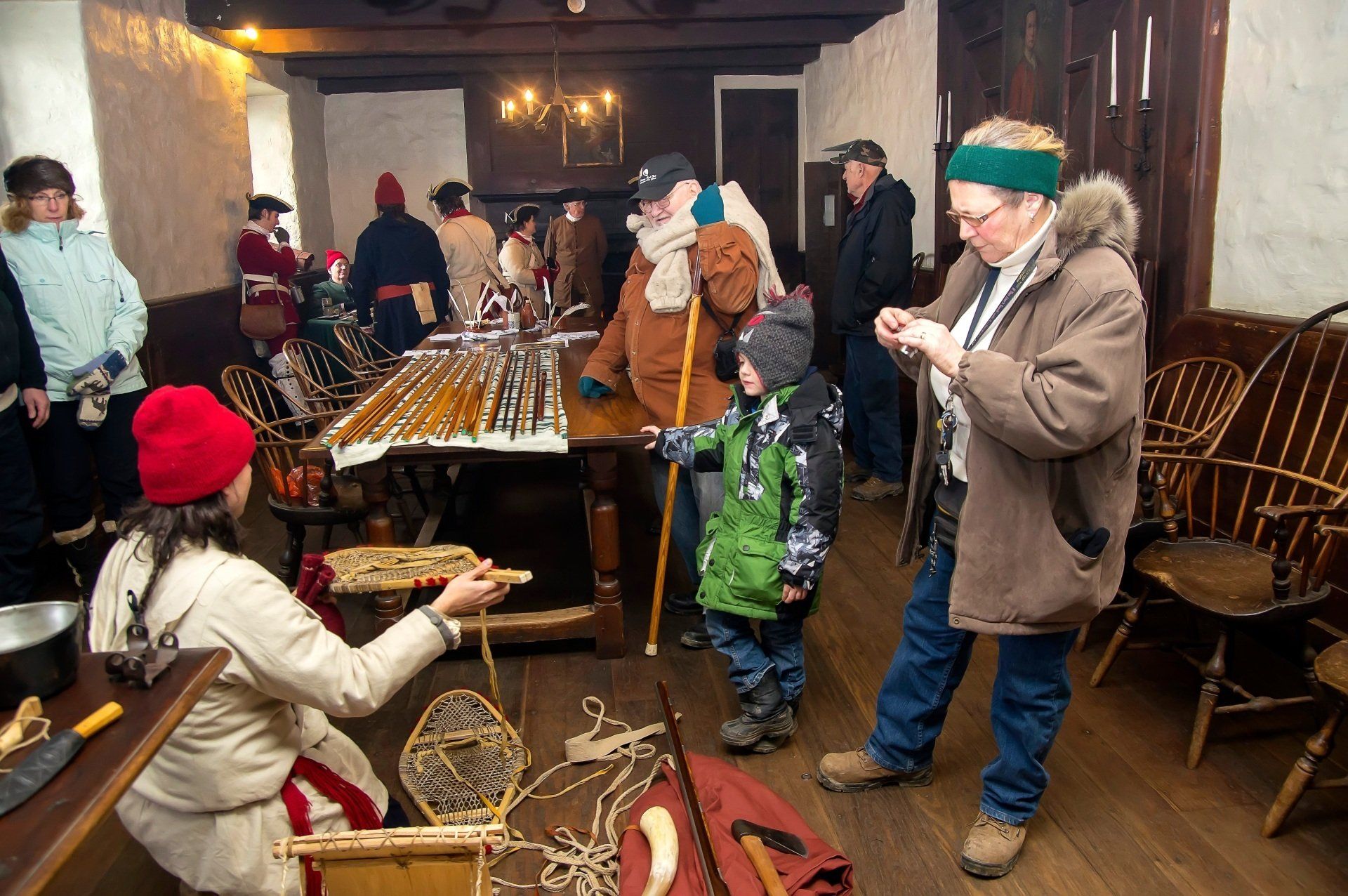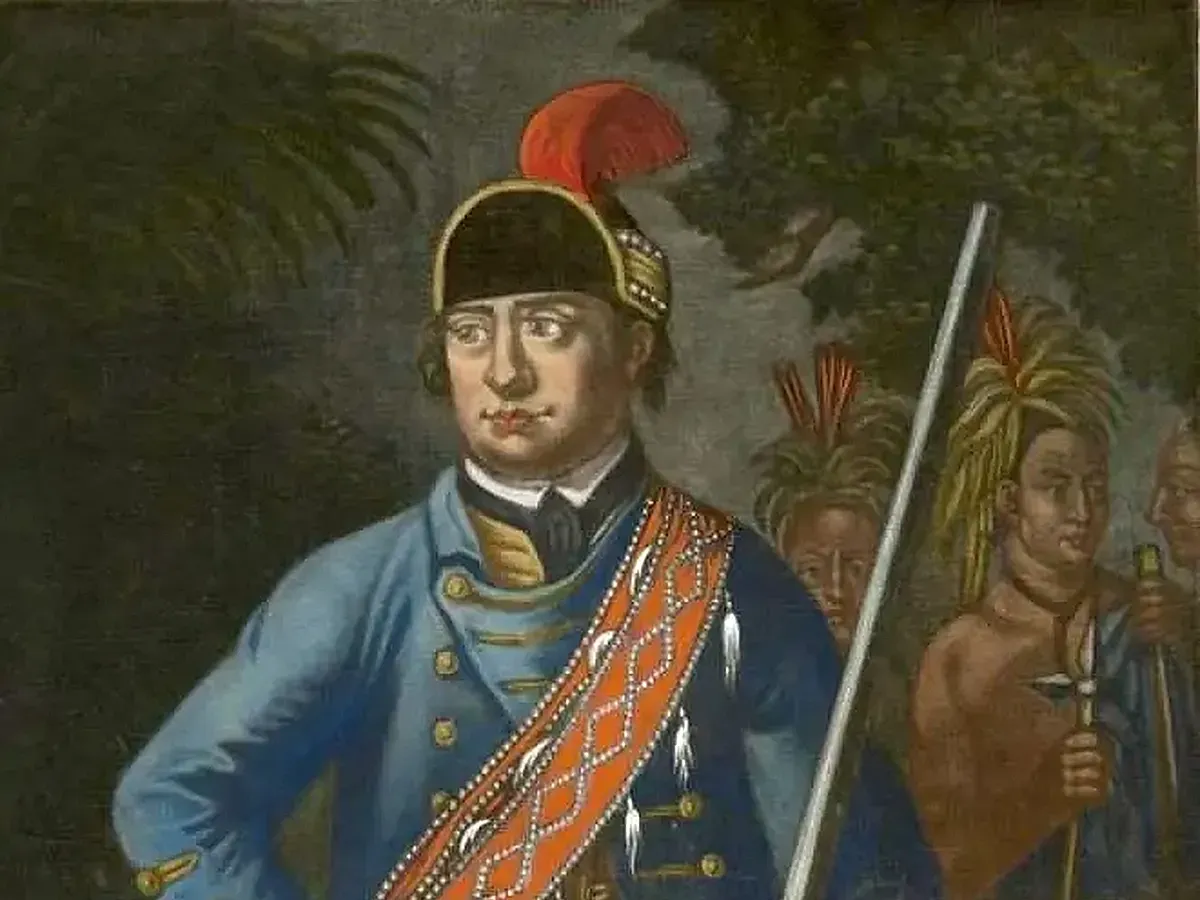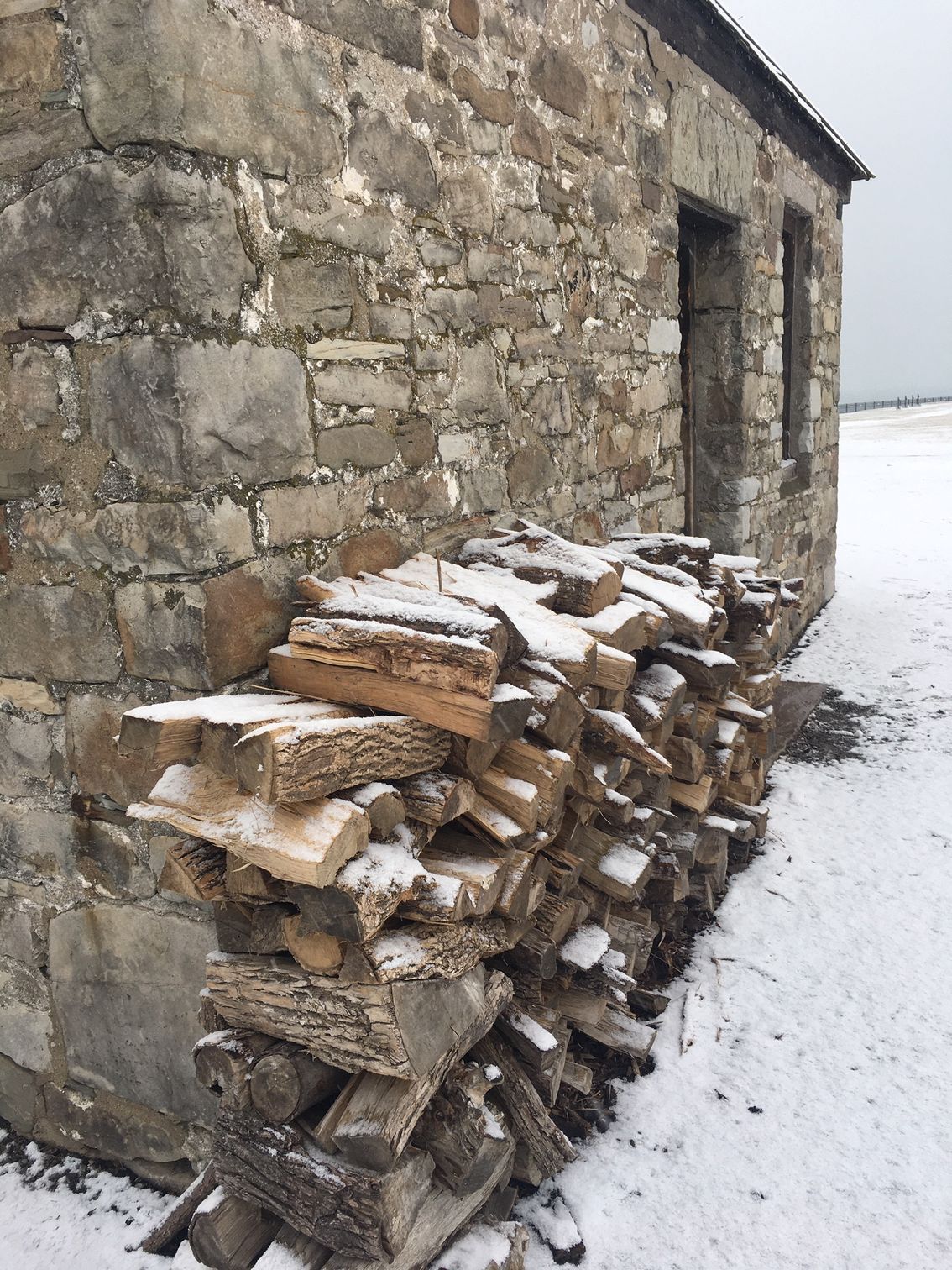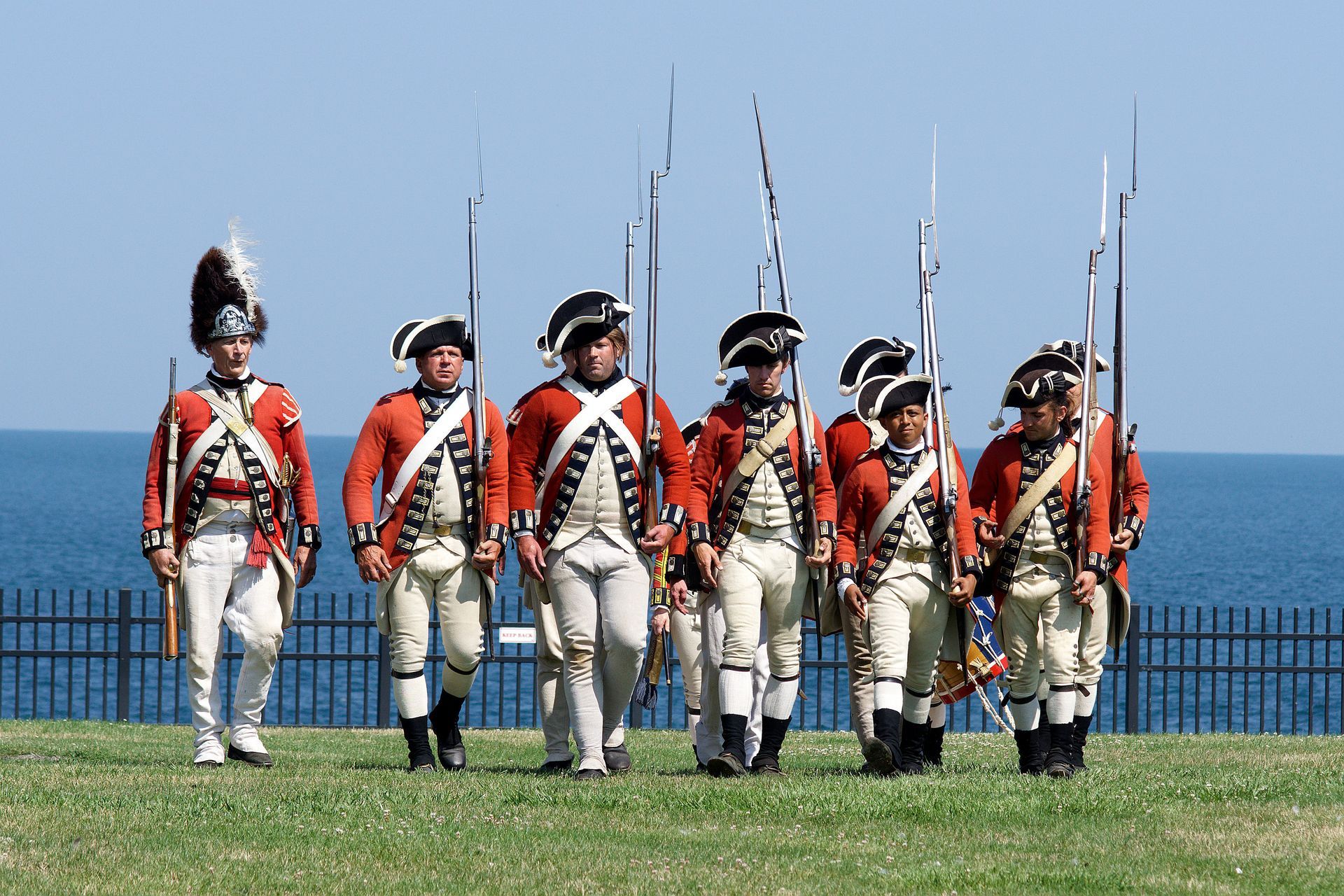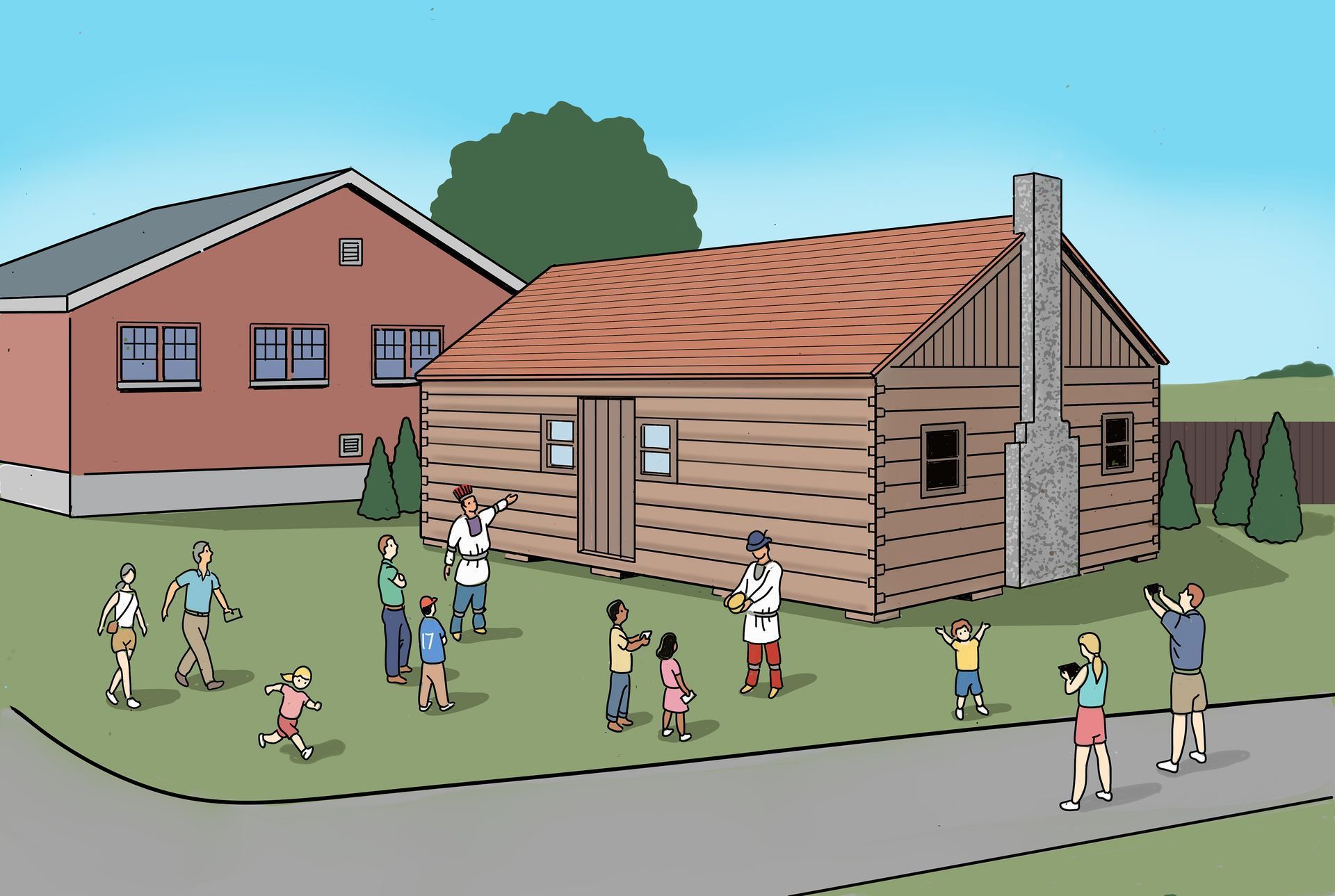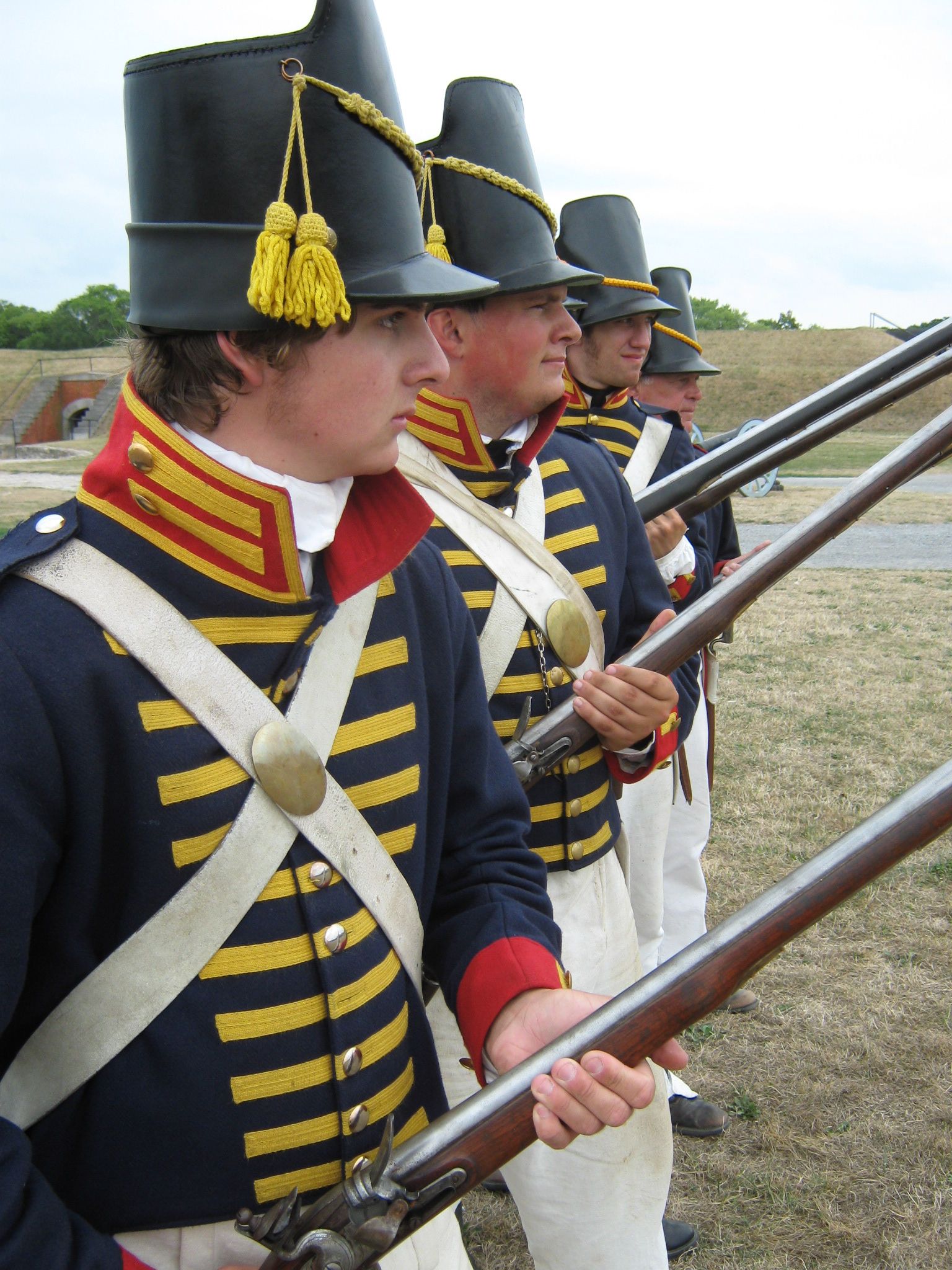Everything is now to be Feared for Fort Niagara
The year 1758 marks the turning point in the French and Indian War. Until that year, there had been few British victories, while the French reaped one triumph after another. Britain’s plan for the 1758 campaign was an overwhelming assault on New France. The main thrust, with an army of 17,000 men, would be made against Fort Carillon (Ticonderoga) on Lake Champlain. Another 15,000-man force would attack Louisbourg, the fortified seaport that guarded the entrance to the St. Lawrence River. A third force of 6,000 men would march over the mountains of Pennsylvania to oust the French from the Forks of the Ohio (Pittsburgh).
New France’s meager resources had to be concentrated in these three places to repel Britain’s attacks. Even so there was bitter disagreement between the two leaders charged with the defense of the colony, Governor Vaudreuil and General Montcalm. Vaudreuil conceived a plan to send General Francois Gaston, duc de Levis with 3,500 men from Montreal via Oswego to attack the Mohawk Valley. As British forces neared Ticonderoga however, this plan had to be set aside and the men moved south to bolster Montcalm’s defense of that strategic outpost.
This situation left Lake Ontario only lightly defended. A small garrison of about 110 held Fort Frontenac [Kingston, ON] at the eastern end of the Lake and the newly expanded Fort Niagara housed a garrison of only about 40 soldiers. Louis Antoine de Bougainville, aide to General Montcalm commented that Niagara’s small garrison “will not even suffice to line the ramparts of one of the bastions.”[i]
There was some justification for weakening the Lake Ontario district in favor of other theaters of war. Since 1756 and the fall of the British post at Oswego, the French enjoyed complete naval superiority on the Lake. Nine warships, some of French construction, others captured from the British, were available to keep the English at bay. During the summer of 1758, at least two of these ships were slated to sail between Forts Frontenac and Niagara carrying goods and supplies and bringing stone to line Niagara’s earthen walls.
This situation changed dramatically on August 27 when Col. John Bradstreet, leading an army of about 3,100 British and Provincial soldiers, attacked and captured lightly defended and decrepit Fort Frontenac. In one of the boldest actions of the French and Indian War, Bradstreet’s troops captured or destroyed 60 cannons, 16 mortars, 9 sailing vessels, large quantities of military and naval stores, provisions, and Indian goods valued at 800,000 livres. Captain Thomas Sowers described the spoils of victory as,
Provisions of every species for twenty thousand men for at least Six months. This fort was the grand magazine for supplying the Forts on the Lake to the Southwestward of it as well as those up on the Ohio as far as Fort Duquesne… there was scarce a Military or Naval Store which this Place did not abound with.[ii]
On August 30 Governor Vaudreuil learned of Fort Frontenac’s surrender. Troops were rushed to La Presentation [Ogdensburg, NY], a fortified mission that now protected the western flank of the St. Lawrence Valley. Would the British descend the St. Lawrence to attack the heart of New France?
Of equal concern was Bradstreet’s seizure of two warships anchored at Frontenac. In just a few days, the naval situation on Lake Ontario had completely changed; the initiative had passed to the British and Fort Niagara stood vulnerable.[iii] Commissary Doreil summed up the fears of many French officials when he wrote
My fears are too well founded… the enemy is master of the post of Frontenac... No precaution was taken with our navy. The English, more careful than we, have burnt it, with the exception of two 20 gun brigs, which they have preserved, the more effectually to exclude us from Lake Ontario... Everything is now to be feared for Fort Niagara, which, indeed, is good, but as bare as Frontenac. [iv]
Vaudreuil quickly ordered Captain Jean-Baptiste Testard de Montigny to lead 500 men in 30 canoes across Lake Ontario to Fort Niagara’s relief. If the British warships tried to interfere, Montigny’s instructions were to land and drag his canoes into the woods out of reach of the ships’ guns. Vaudreuil could scarcely have selected a more qualified commander for the mission. The 34-year-old Montigny was an expert in Indian languages and customs, had served on dozens of raids against the British frontiers, and had most recently been employed convoying supplies to Detroit. Montigny was an experienced frontier warrior equally at home in a birchbark canoe, or leading war parties of French and Indians in the woods. He gathered his forces at La Presentation and set off on or about September 11. His journey to Niagara took seven days. [v]
Montigny’s arrival at Niagara about September 18 found the small garrison preparing to burn outbuildings and make the best defense they could. Niagara’s commander, Captain Jean-Baptiste Mutigny de Vassan had only learned of Frontenac’s fall a few hours before Montigny’s arrival (the news reached Niagara almost three weeks after it was received in Montreal). No doubt Montigny’s reinforcement was welcome, as was the subsequent arrival of additional convoys bringing much needed supplies.
By this time, however, the danger had passed. Bradstreet’s orders did not include an attack on Fort Niagara. He had destroyed seven of the captured warships at Frontenac and had loaded the remaining two with loot from the fort. Once ashore at Oswego, Bradstreet ordered the last two ships destroyed. He returned eastward by bateau, leaving Lake Ontario in the much-weakened hands of the French. Shortly after Bradstreet’s departure from Oswego, the famous French partisan leader Jean-Baptiste Levrault de Langy arrived there and found the captured ships as well as some “barges” destroyed. His report to the Governor on September 18 allayed many fears.
Later that year, the New York Gazette reported that, in view of Niagara’s weakness, it was an ‘unlucky thing’ that Bradstreet had not pressed on. It would take another year and another campaign to secure the capture of Fort Niagara. In the meantime, the British had secured two of their objectives for 1758, Louisbourg and Fort Duquesne. France retained Carillon after repulsing British forces in the bloodiest battle yet fought on American soil. As for Niagara, plans were already in preparation to reestablish a navy on Lake Ontario and to strengthen the Fort. It was agreed that Captain Pierre Pouchot should return to Niagara to replace the ineffective and haughty Vassan as commandant.
Louis Antoine de Bougainville summed up the situation by writing, “Let us hope that the danger we have escaped will serve as an example to us not to abandon, in the future, a fort which is the key to the country.”
[i] See Adventure in the Wilderness, the American Journals of Louis Antoine de Bougainville, 1756-60, translated and edited by Edward P. Hamilton, University of Oklahoma Press, Norman and London, 1964. pp. 283-4
[ii] Sowers to the Commissioners of Ordnance, October 1, 1758 as quoted in Royal Fort Frontenac, Dr. Richard A. Preston, and Trans. Dr. Leopold LaMontagne, ed. Toronto, Champlain Society 1958. pp. 267-8.
[iii] The two vessels seized were probably the Marquise de Vaudreuil and the London. The former, mounting 16 guns, was a French schooner, built at Frontenac in 1755. The latter was a brigantine of 18 guns launched by the British at Oswego in 1756. London was captured by the French when Oswego capitulated in August 1756. See Robert Malcolmson, Warships of the Great Lakes, 1754-1834, Naval Institute Press, Annapolis, 2001.
[iv]M. Doreil to Marshall de Belle Isle, 31 August, 1758. Documents Relating to the Colonial History of the State of New York, v. X p. 821
[v] See David A. Armour, entry for Testard de Montigny, Jean-Baptiste-Phillipe, Dictionary of Canadian Biography Online www.biographi.ca


